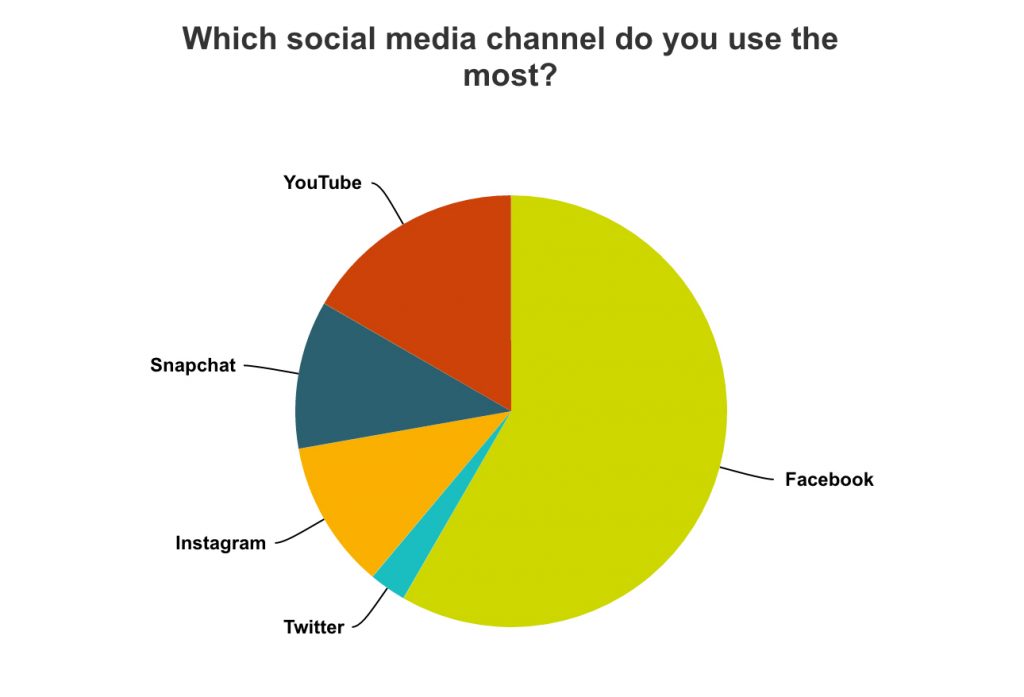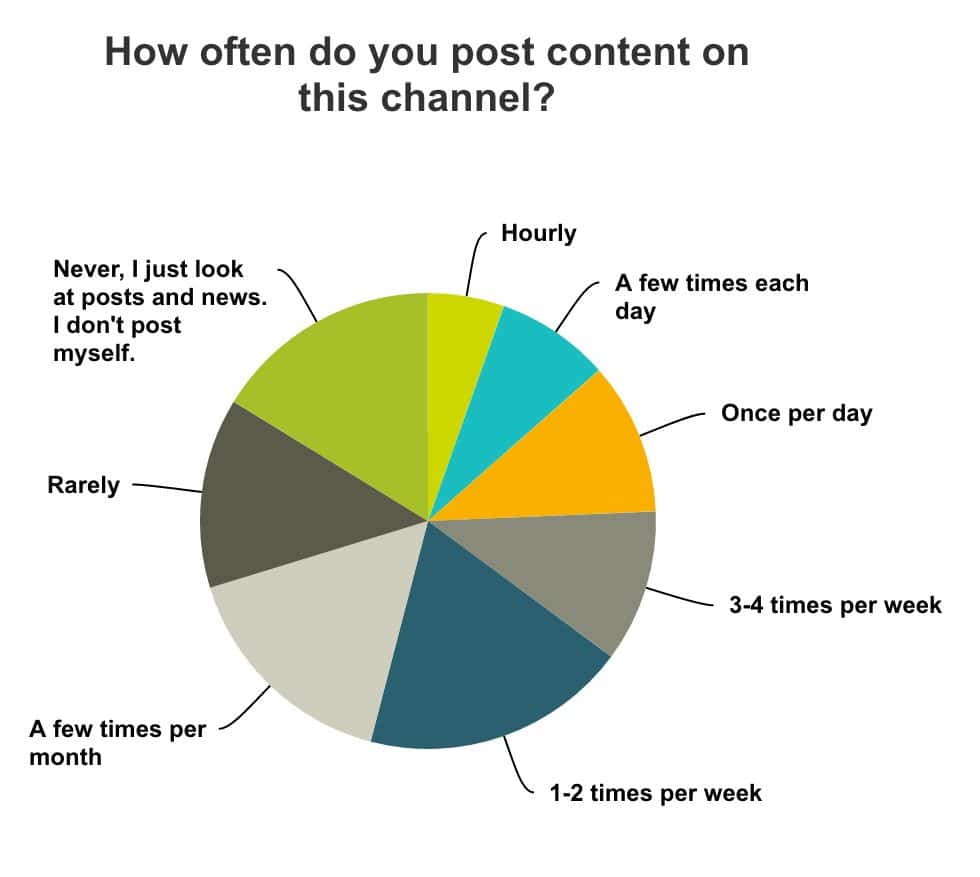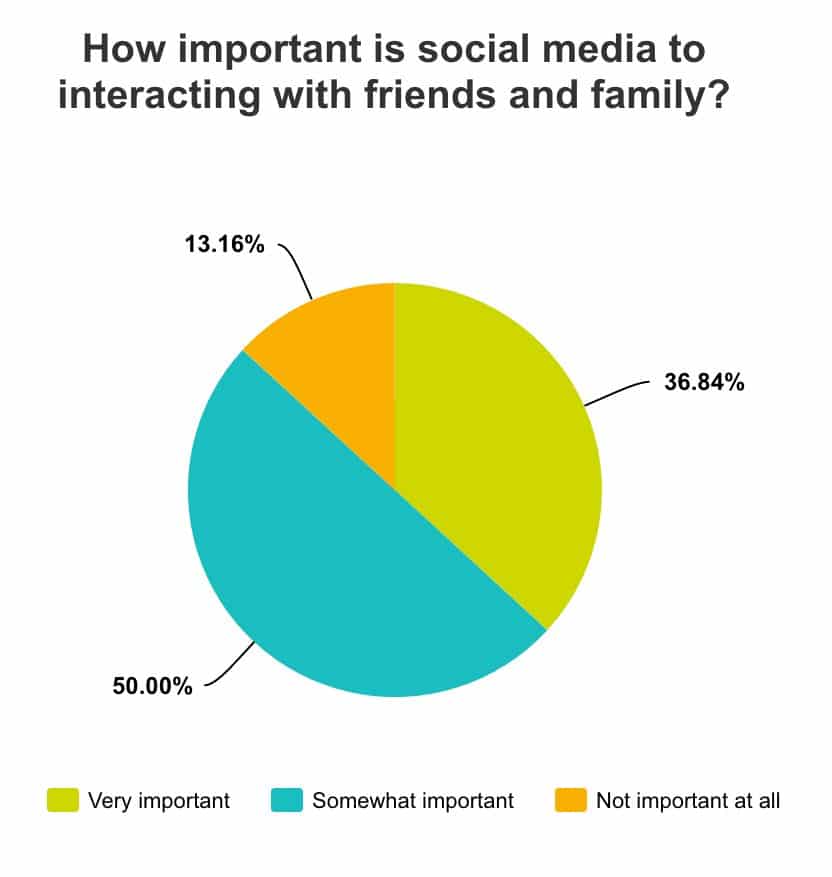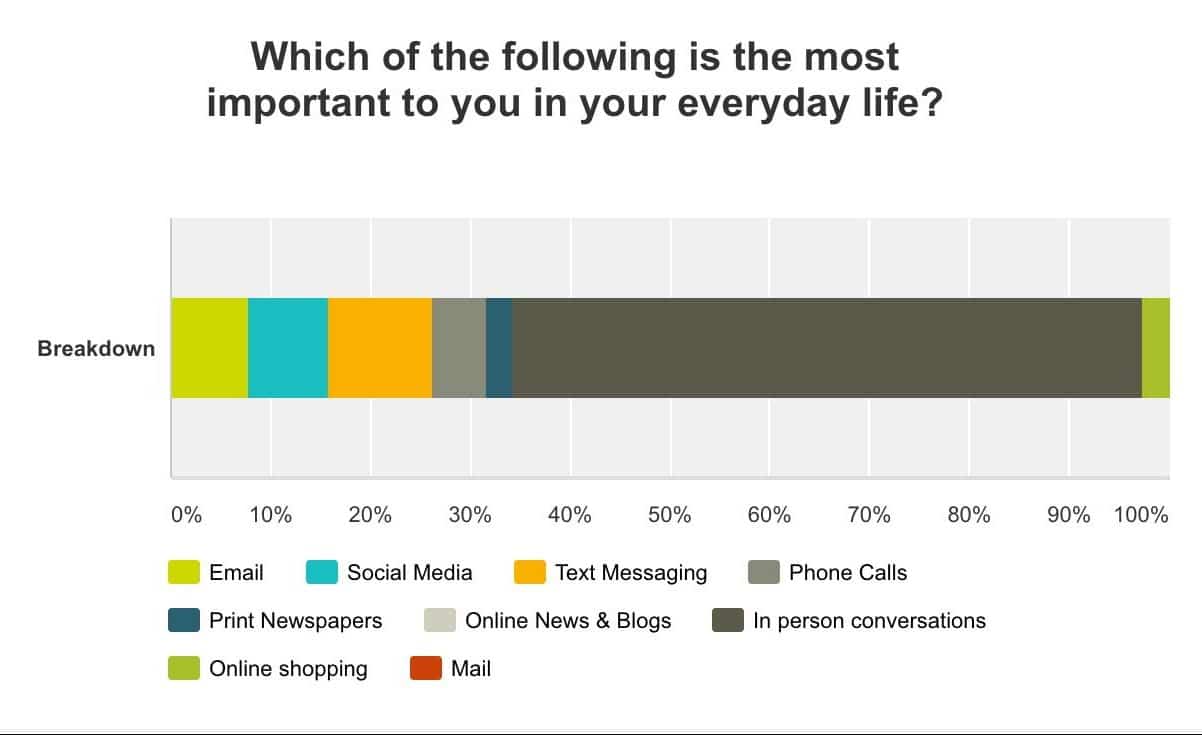
Social Media Impact Study
I recently ran a survey to test how much social media connects with people, what channels they use the most, and how often they are active. The results you see below are not analyzed based on individual respondents, but I will go into that data in a later article to compare social media usage with age, the preferred method of communication, etc.
Essentially, I was hoping to confirm some ideas about social media that I had assumed and was looking for any insight that might provide useful data for social media marketing campaigns for our customers here at Market House.
Facebook is King
After the initial survey questions about age and gender, I began trying to understand the preferred social media channel of choice for consumers. While not surprising, it was a nice confirmation that over half (58%) of those surveyed use Facebook the most over other top social media channels like Snapchat, Instagram & others.
Funny anecdote: I used Twitter as one of the main channels to distribute this survey, but it ranked last as the preferred social media channel of respondents.
Coming in 2nd at 17%, YouTube was a bit surprising at first as a most-used channel, but when you take into account the growing number of cord-cutting consumers who stream their media at home, this number is far less surprising. Tying for 3rd at 11%, Snapchat and Instagram, both are strong and growing platforms. I will say I was a little surprised that Twitter clocked in last at 3%, but after all, this is why I did the survey.
The Frequency of Posting Content
As a follow-up to the previous question, the study also looked at the frequency of how often users post content on their preferred social media channels.
Here’s where we start getting some interesting data, which will probably warrant a follow-up survey and future articles.
- Hourly: 5%
- A few times each day: 8%
- Once per day: 11%
- 3-4 times per week: 11%
- 1-2 times per week: 19%
- A few times per month: 16%
- Rarely: 14%
- Never, I just look at posts and new ones.
I don’t post myself: 16%
1/4 of consumers post on their social media channel of choice daily.
What’s the takeaway here? If you are a business operating in the B2C space, you have 25% of social media users actively creating and sharing content daily. You also have an additional 30% who post a few times each week. So, over 50% of social media users are actively creating content on a weekly basis. Over half of the social media users are content creators. They’re hungry for content. Staying active daily on social media will give you the edge in staying engaged with your customers.
Nighttime Social Media Habits
The survey asked 2 similar questions separated by time of day: Aside from activities such as showering, bathing, brushing teeth, etc. what’s the first thing you do in the morning after waking up and the last thing you do before going to sleep at night? While the morning saw over 50% responding with social media use and a nearly even split between checking email and reading, the evening saw a different set of data.
Social media usage before bed climbed to over 75% before bed, leaving a race between reading, checking email, and watching tv for the second place spot.
PRO TIP: If you are new to the digital marketing game and are working on a very limited budget, you might want to consider day-parting your social media campaigns to only run during the evening hours. This way, you’ll hit a captive audience and really focus your spending.
Social Media Interaction: Family vs. Business
Next, in our study, I was looking to see the difference in importance between social media use for typical friend/family interactions versus those interactions with businesses. Interestingly enough, these 2 questions both collected 50% responses for “somewhat important.” I consider this to be an indifferent response. When I run this survey again, I’ll add more options to respond to these questions. With that said, here’s the data:
With the middle responses being the same, let’s look at the split for the other 2 available responses. Concerning interactions with family and friends, 37% of respondents found that using social media was very important. We allowed for open-ended responses to this question and found that those who found this interaction as very important used social media to connect with families out of state and in the country.
When reviewing the data from social media business interactions, we see that the balance tips in the opposite direction towards the not important at all response. While this 29% is a bit disheartening, it’s equally significant because there’s a remaining 71% of consumers who feel that social media is important for interacting with businesses. For that 71% who responded as social media being important, they had this to say:
- “I like to subscribe and get daily posts but as far as interacting, I prefer to do that via phone call”
- “Important for businesses to share things that they do, i.e. sales, outreach events/community service, events. Important for consumers to give feedback (positive or negative) to businesses.”
- “I am not actively involved in the social media presence of the business I work for, but I appreciate when businesses tweet me RELEVANT tweets based on something I have said, especially if it is obviously personalized to me.”
- “As a key executive for a non-profit organization, I use Facebook to advertise events and share updates to increase participation with the organization.”
- “I can request assistance for customer service through Twitter.”
- “I use Twitter to reach out to certain businesses if I am disgruntled and if I am pleased with their service. That’s about it really.”
- “I prefer to see businesses maintain a social media presence as it tends to be a good indicator of customer service.”
- “It’s easy to see what businesses are up to, what promotions are going on, etc with social media.”
What’s the takeaway? Customers care about content. They want to know what’s going on with the brands they use and care about. However, they want the content to be relevant and valuable. Don’t post junk. Provide real, timely content that they’ll appreciate and, most importantly, that they’ll want.
Which method of communication is the most important?
I ended up the survey with a general question regarding the importance of the different types of communication in everyday life. (And, for fun, I just added online shopping to see if it would receive any responses – and it did!)
This question provided overwhelming proof that human interaction is still vitally important. You can put away your robots. Asimov’s Three Laws of Robotics are not pertinent quite yet. All kidding aside, this is solid data with great takeaways for your business.
Interpersonal communication is very important. 63% of those believed this to be of utmost importance.
If you have a sales team, have at least one around the office to speak with potential customers and clients if they visit the office. While websites and social media can provide bios, pictures, videos, etc. featuring your staff, there’s a definite need for face-to-face communication.
Outside of in-person conversations, text messaging was second on the list of importance, followed by email and then social media. We have a client with many customers of their own who prefer to do entire transactions by text and email. Phone calls received a whopping 5% of the responses, which further demonstrates the need for your business to offer alternate communication tools (ie. text messaging, social media, email & website contact forms, live chat on your website, mobile messaging services, etc.). Funny enough, print newspapers and online shopping were valued as equally important at 3% each and online news & blogs didn’t even rank.
So What?
Social media is important to consumers. While it might not be important to everyone, social media is here, it’s connected us all (consumers and businesses alike) and it will only continue to grow and evolve. Use the data above and the takeaways in your own business to focus on new marketing strategies that connect with consumers in the digital spaces they live.







